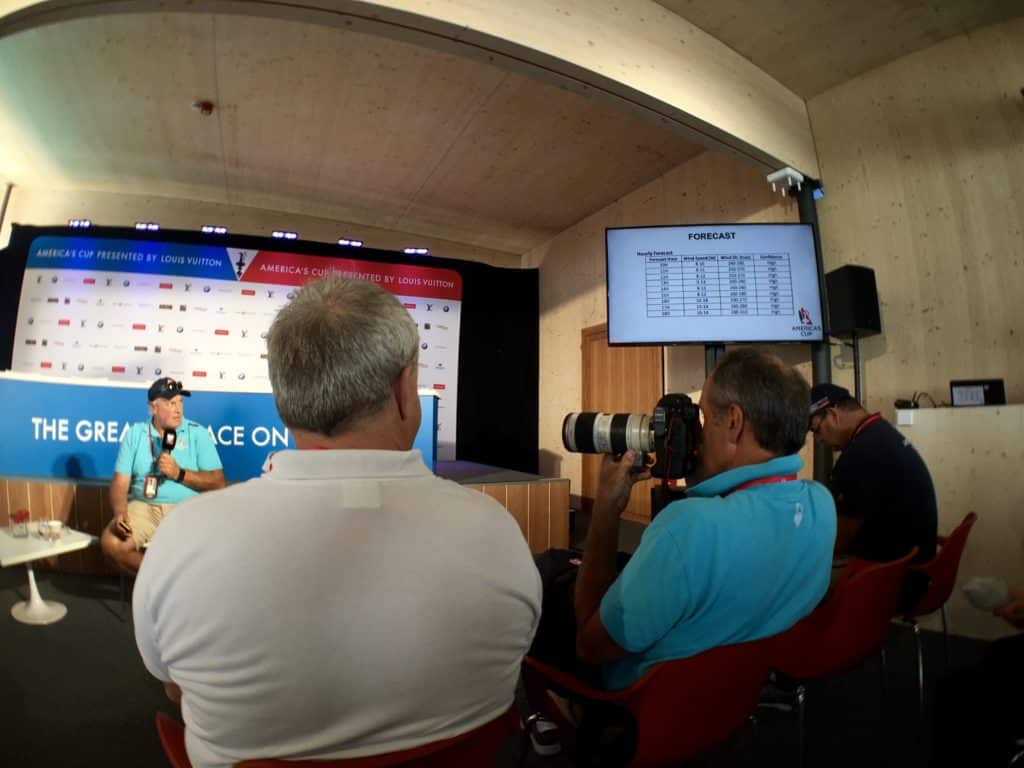
The forecast for Saturday, May 27, says Regatta Director, Iain Murray, is 10 to 12 knots, right on the cusp for critical board selection: high board or fast board. Given the importance of a running start on Leg 1, we could very well see different boards in each hull; a “high board” in the port hull for quicker flight and a more controlled left turn at Mark 1.
Murray predicts the day’s races will be 29 minutes in length, with the first winner completing the course in roughly 18 minutes. Conditions will allow them to run races efficiently enough to space them 10 minutes apart, something which would have been a challenge on the abandoned opening day. The abandonment was welcome by teams, says Murray, because “there’s been quite a rush to over the past few days to get a few last bits on the boats.”
But everyone’s measured in, and as of this morning the Village was finally coming to life, cars being polished, caterers cueing up their dishes, musicians warming up and volunteers assuming their positions. Emirates Team New Zealand was first to splash and shortly thereafter, the cranes were running at full capacity across base row.
When asked for his observations of the informal practice races leading up today, Murray concluded that prestart aggressiveness has varied, with perhaps Jimmy Spithill and Ben Ainslie being more the “fighting” types. Nathan Outteridge and Peter Burling, he says, have tended to be “leaders.”
“Fighting in the start box is pretty intense,” says Murray. “The weather position is great if you think you’re faster.”
A question in the morning media briefing came up about the implementation of redress, should a collision occur, and Chief Umpire, Richard Slater, explained that each chase boat will have measurer onboard to evaluate, on the water, the extent of any damage. Back onshore in the booth, Slater and two others will use a “codified” process to determine whether it was “impossible for them to avoid,” and whether there was any fault. If redress is granted, it will only be applied to the point of the match itself.









